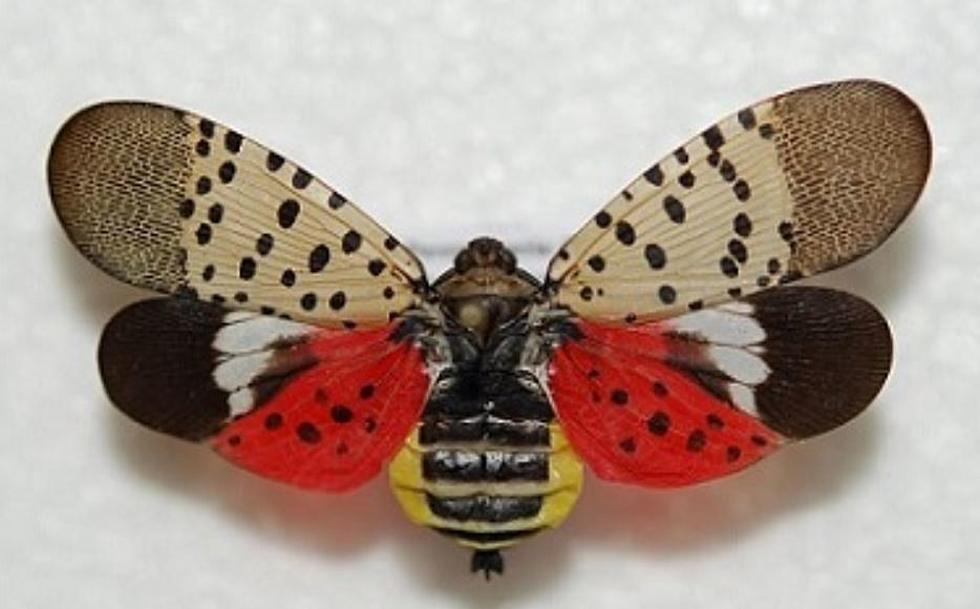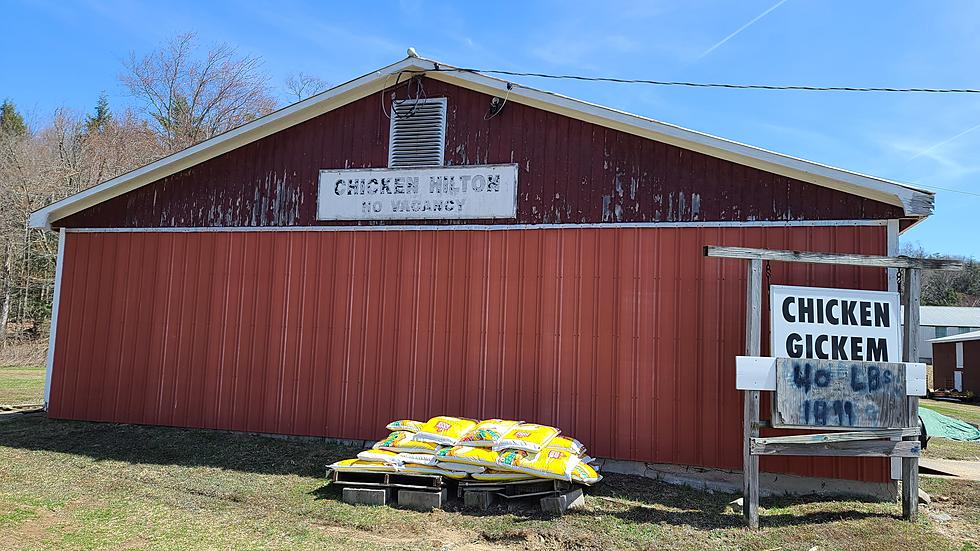
Invasive Lanternfly Now in NY and Could Ruin Utica/Rome Ag and Tourism
This is NOT a pretty moth; it's a spotted lanternfly (SLF), an invasive pest that could devastate our crops and agricultural production in CNY.
The New York State Department of Environmental Conservation (DEC) and Cornelle Cooperative Extention, part of the New York State Integrated Pest Management Program (NYSIPM) have confirmed the spotted lanternfly is in NYS.
The spotted lanternfly, an invasive pest from Asia, is potentially the worst insect pest to the [Northeast U.S.] since the gypsy moth [arrived] nearly 150 years ago says Rick Roush, dean of Penn State's College of Agricultural Sciences in a State Impact article.
What is the spotted lanternfly (SLF)?
SLF is an invasive pest from Asia that feeds on a wide variety of plants such as grapevine, hops, maple, walnut, fruit trees, and others. Specialized mouthparts (the beak) of both nymphs and adults pierce through plant tissue and suck sap directly from the phloem of leaves, stems, branches, and trunks resulting in oozing, wilting, yield loss, even plant death.
Identification
Nymphs are black with white spots and turn red before transitioning into adults. They can be seen as early as April. Adults begin to appear in July and are approximately 1 inch long and ½ inch wide at rest, with eye-catching wings. Their forewings are grayish with black spots. The lower portions of their hindwings are red with black spots, and the upper parts are dark with a white stripe. In the fall, adults lay 1-inch-long egg masses on nearly anything from tree trunks and rocks to vehicles and firewood. They are smooth and brownish-gray with a shiny, waxy coating when first laid.
Where are they located?
SLF was first discovered in Pennsylvania in 2014 and has since been found in New Jersey, Delaware, Virginia, and now in New York.
Image Credit: Pennsylvania Department of Agriculture
What is the risk to NYS?
SLF threaten New York's agricultural and forest health. They feed on the sap of more than 70 plant species, excrete large amounts of sticky "honeydew," which then attracts swarms of insects, sooty molds that negatively affect the growth and fruit yield of plants.
How do they spread to new areas?
SLF can jump and fly short distances, and they spread primarily through human activity. They often hitch rides to new areas when they lay their eggs on vehicles, firewood, outdoor furniture, stone, etc. and are inadvertently transported to new areas.
What are the signs of an infestation?
- Sap oozing or weeping from tiny open wounds on tree trunks, which appears wet and may give off fermented odors.
- One-inch-long egg masses that are brownish-gray, waxy, and mud-like when new.
- Old egg masses are brown and scaly.
- Massive honeydew build-up under plants, sometimes with black sooty mold.
If you believe you've found spotted lanternfly in New York, the DEC is asking that you take pictures of the insect, egg masses and/or infestation signs. Include something for scale such as a coin or ruler and email to spottedlanternfly@dec.ny.gov. Note the location (address, intersecting roads, landmarks, or GPS coordinates.)

See the Must-Drive Roads in Every State
More From 96.1 The Eagle









